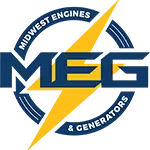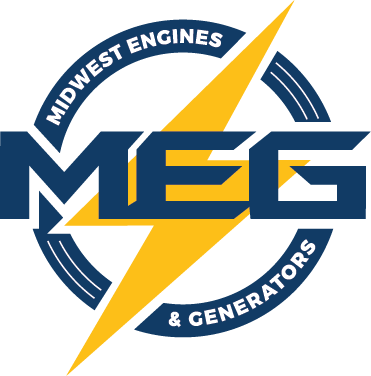Ever wondered how a generator works? It’s not magic, although it might seem that way during a power outage. These vital machines have become essential for supplying backup electrical power and supporting our work on job sites, but the science behind it is surprisingly straightforward.
At its core, a generator transforms mechanical energy into electrical energy. Think of it like a reverse electric motor. Instead of using electricity for motion, it uses motion to generate electricity, all thanks to Michael Faraday’s 1831 discovery of electromagnetic induction.
But how does this process actually unfold? Let’s explore the internal mechanisms of these impressive machines.
Table of Contents:
- The Basic Components of a Generator
- The Heart of the Generator: The Engine
- The Alternator: Where the Magic Happens
- How a Generator Works: The Step-by-Step Process
- The Role of the Voltage Regulator
- Cooling and Exhaust: Keeping Things Running Smoothly
- The Fuel System: Keeping the Generator Powered
- The Control Panel: Your Interface with the Generator
- Types of Generators
- Efficiency and Environmental Considerations
- Safety Considerations
- Conclusion
The Basic Components of a Generator
Before we dive into how a generator works, let’s look at its main parts:
- Engine
- Alternator
- Fuel System
- Voltage Regulator
- Cooling System
- Exhaust System
- Lubrication System
- Battery Charger
- Control Panel
- Main Assembly / Frame
These parts play vital roles in a generator’s function. Now let’s explore how these components work.
The Heart of the Generator: The Engine
The engine is where it all starts, the main source of power. Generators generally utilize internal combustion engines, much like those in cars. These engines can use fuels such as gasoline, diesel fuel, propane, or natural gas.
When you start the generator, the engine converts chemical energy from the fuel into mechanical energy. This energy takes the form of a rotating shaft. This rotation is crucial for producing electricity.
Different generator sizes use various engine types. Smaller, portable models have engines that vary in power output based on their design. Larger industrial generators require bigger engines, with larger fuel tanks, capable of supplying substantial electrical power.
The Alternator: Where the Magic Happens
The alternator, sometimes called the ‘genhead,’ is directly connected to the engine. This is the part that produces electricity. The alternator comprises two key components:
- The rotor (or armature): The moving part connected to the engine’s shaft.
- The stator: The stationary part that surrounds the rotor.
The rotor contains a powerful electromagnet or permanent magnets. As the engine spins the rotor, a rotating magnetic field is created inside the stator. The stator has coils of wire, and as the rotating magnetic field passes over these, it induces an electric current.
This is electromagnetic induction at work. This process illustrates how moving magnetic fields can create electric fields, thus powering our devices. The resulting current is an alternating current (AC).
How a Generator Works: The Step-by-Step Process
Now that we’ve covered the components, let’s walk through how a generator operates step by step:
- The engine starts, using fuel from the fuel system.
- The engine’s crankshaft begins to rotate.
- The rotation spins the rotor within the alternator.
- The spinning rotor generates a rotating magnetic field.
This field then induces an electric current within the stator’s wire coils. The current produced is generally alternating current (AC). Next, the voltage regulator makes sure the output AC voltage remains constant.
Finally, electricity travels via the control panel, providing power output to any connected devices. This continues as long as the engine runs, and fuel is available. A fuel pump helps deliver fuel from the storage tank to the engine, often passing it through a fuel filter for purification.
The Role of the Voltage Regulator
The voltage regulator plays a critical role. Without it, the produced electricity could be unstable and even harm devices. The regulator does this by converting a bit of the AC output into DC current.
This DC current powers exciter windings inside the stator. The exciter windings then generate a small AC current. Rotating rectifiers then turn this current back to DC.
This DC current forms an electromagnetic field around the rotor. The cycle continues until the generator reaches full operating capacity. If the electrical output drops, the regulator boosts it back to the required level.
Cooling and Exhaust: Keeping Things Running Smoothly
All of this energy conversion creates heat, necessitating a cooling system. Many generators use a radiator and fan setup, like in cars. For safe ventilation, OSHA advises a minimum of three to four feet of open space around a generator.
Exhaust systems safely expel toxic gases the engine produces. Correct exhaust management is vital as the gases can be harmful. That’s why you shouldn’t run generators indoors.
A water pump might also be part of the cooling setup, particularly in larger industrial generators. These additional features assist in sustaining ideal operating levels, preventing overheating and damage.
The Fuel System: Keeping the Generator Powered
The fuel system, including the fuel tank and fuel lines, is crucial. For smaller units, the fuel tank is built-in. Bigger, industrial models may have an external fuel tank.
Safety is important for all fuel systems. They must adhere to rules like those from the National Fire Protection Association. Proper fuel management not only keeps the generator running but also ensures safe operation, reducing hazards.
Fuel injectors also play a critical role, particularly in generators powered by diesel. They spray fuel into the engine’s combustion chamber, where it ignites and powers the generator. Some models utilize an external fuel source for long operational hours.
The Control Panel: Your Interface with the Generator
The control panel is where users manage the generator. It usually features:
- Start and stop buttons.
- Meters for voltage, electric current, and frequency.
- Alert lights.
- Circuit breakers.
Advanced generators might have digital screens and remote monitoring features. These features make operation easier, enabling effective management and maintenance. Some include an automatic battery charger to maintain the starter battery.
Types of Generators
There are different kinds of generators, each with unique features:
- Portable Generators
- Standby Generators
- Inverter Generators
- Solar Generators
Every type has advantages, and your pick depends on your specific power needs. Each generator is built on a sturdy main assembly. A solid frame helps keep the generator stable and long-lasting.
Here’s a table summarizing the different types of generators:
| Generator Type | Description | Typical Use |
|---|---|---|
| Portable Generators | Compact and mobile, designed for temporary power needs. | Camping, outdoor events, small job sites. |
| Standby Generators | Permanently installed, automatically providing power during outages. | Homes, hospitals, businesses needing continuous power. |
| Inverter Generators | Produce clean, stable power, suitable for sensitive electronics. | Recreational vehicles, home electronics, delicate equipment. |
| Solar Generators | Utilize solar panels to charge a battery, providing renewable energy. | Off-grid living, emergency backup, eco-friendly power. |
Efficiency and Environmental Considerations
Modern generators are getting more efficient. For instance, combined-cycle systems reuse exhaust heat, greatly improving efficiency. Other innovations, such as fuel cells and thermoelectric generators, also offer eco-friendly ways to generate electricity.
These developments are vital for reducing environmental effects. By making generators more efficient, we lessen our carbon footprint. These improvements demonstrate how engineering can contribute to a greener future.
Safety Considerations
Using a generator safely requires knowing how it works. Here are important safety guidelines:
- Avoid indoor use due to carbon monoxide dangers.
- Adhere to the manufacturer’s instructions for use and care.
- Ensure proper grounding to avoid electrical risks.
- Refrain from refueling a running or hot generator.
- Keep generators dry and protected from weather conditions.
These safety measures are important for safe operation. Following these tips helps prevent accidents and ensures reliable power generation. Regular maintenance and mindful use keep both the generator and users safe.
Conclusion
Understanding how a generator works can help you appreciate these vital machines and use them effectively. Whether it’s the fundamental concept of electromagnetic induction, involving moving electrical conductors, or the detailed teamwork of the engine generator, and control systems, generators display great engineering.
Generators are essential for power during emergencies and remote jobs. As technology progresses, generators will become more efficient, playing a key role in power infrastructure for the future. They stand as a prime example of using a magnetic field to harness energy, turning simple motion into much-needed electrical power.

